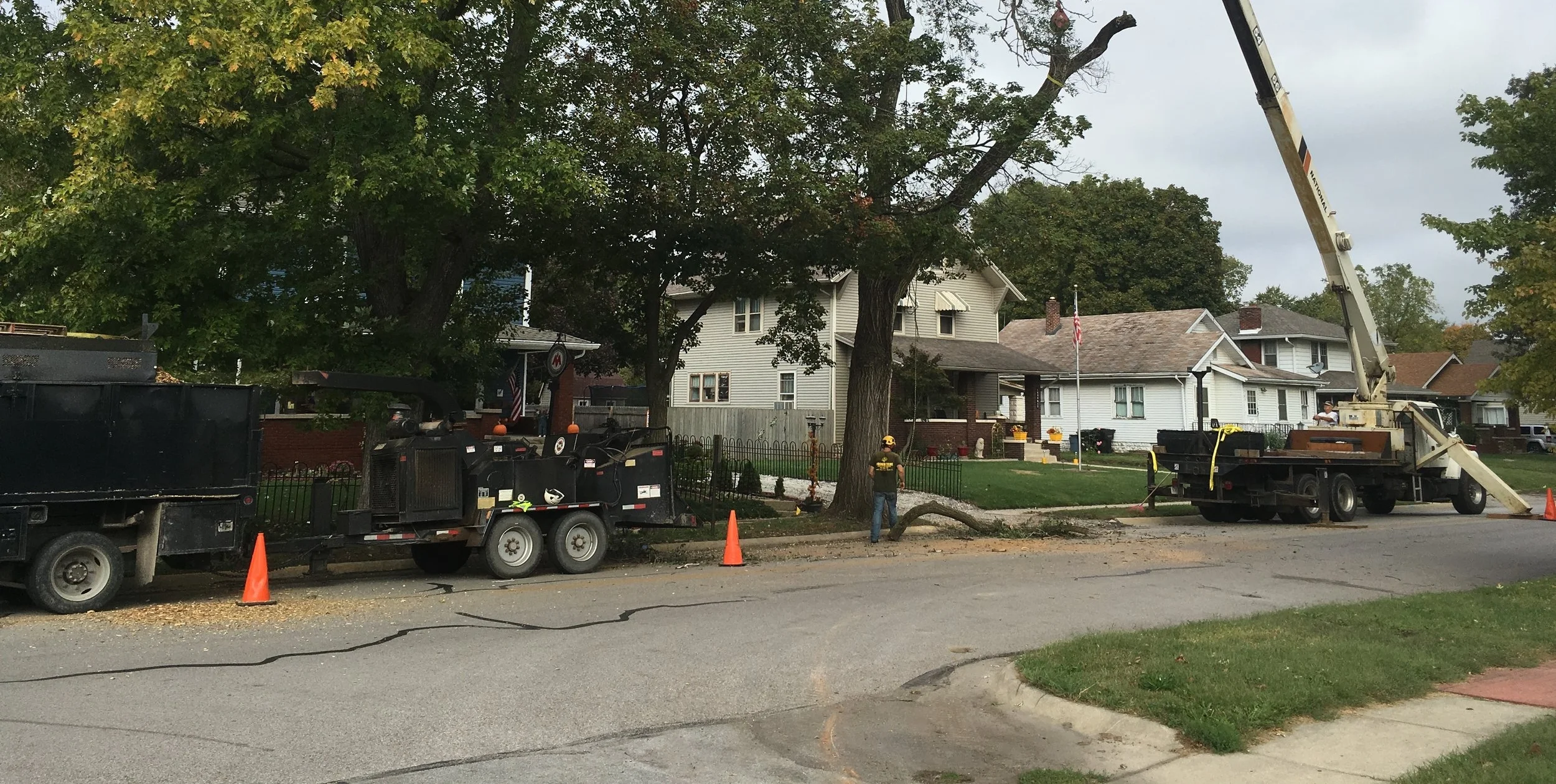You've seen the tall cranes, the chipper and the grinder -- along with that, our team comes wearing bright shirts and an array of safety equipment. Add in our large trucks, and we are hard to miss when we come to your neighborhood!
Everything we use is designed to keep ourselves seen, safe and protected. But what about your property? How do we protect it?
With over 20 years of experience, our research hasn't only been devoted to tree health and knowledge. Our mission is to provide a superior and complete service with integrity. In other words, our goal is always to leave with our clients happy with a property that looks great.
When you browse our reviews, our clients often say that their property looks as if we had never even been there. But how is that possible when we "roll" through with such large equipment? Well, one of our secrets is in the ground mat!
Here are some reasons why the ground mats we use keep your property looking great:
The mats provide an impressive grip to keep our equipment from slipping.
The mats are made to contour to different ground conditions, even sloped areas.
The mats support loads of up to 120 tons! (That's the weight of a Blue Whale, a Boeing C 32-A Military Aircraft or even a 1-story house!)
So, while the large machines are super cool and everyone enjoys watching them work, we believe the ground mats that we use are super impressive. When you see how they work, we know you will, too!
Browning Tree Service employs Joshua Browning ISA certified arborist license #KY-9849A who is a proud member of Indiana Arborist Association and International Society of Arboriculture, serving the West Lafayette and Lafayette, Indiana area!
Here are a couple of our recent reviews from Google.
"5 Stars! Browning Tree Service is impressive! Their work was very high quality, professional and the clean up was amazing. Our neighbors also had positive comments on their work. I highly recommend Browning Tree Service and I will use them again!" - Lucy M.
"I cannot say enough good things about Josh Browning and Browning Tree Service. We had a large tree removed right next to the house. They were on time for both the estimate and the removal. They were professional, friendly and courteous to both us and our neighbors. Safety for themselves, the observers and our property was obviously a priority. These guys worked HARD to get this tree removed and do it right. Their clean up was extremely thorough and there is almost no evidence they were here. We received multiple estimates for this project and chose Browning. Next time we need tree service our only call will be Browning Tree Service." - Megan L.
Click here to visit our YouTube channel and watch our video featuring the ground mats.
Resources:
https://weightofstuff.com/list-of-things-that-weigh-100-tons/
Google Reviews of Browning Tree Service










